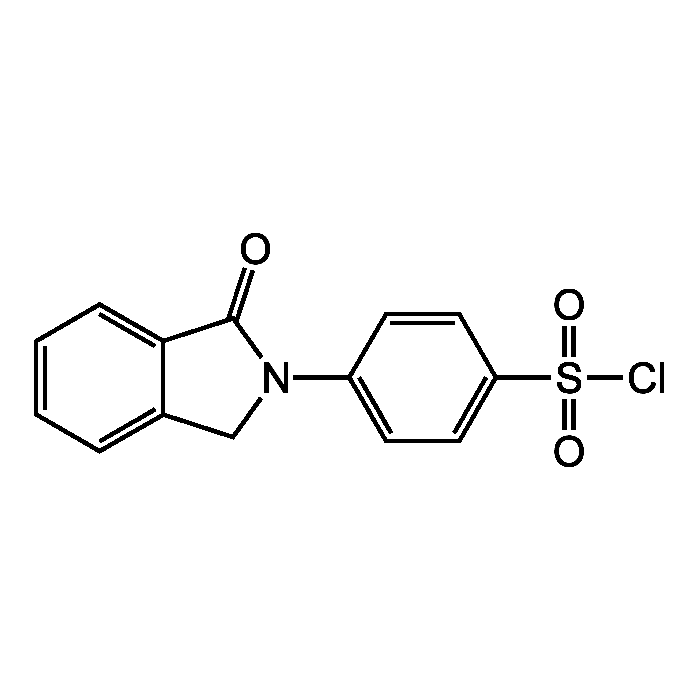Cookie Policy: This site uses cookies to improve your experience. You can find out more about our use of cookies in our Privacy Policy. By continuing to browse this site you agree to our use of cookies.
Chemodex
Physil chloride
As low as
63
CHF
CHF 63.00
In stock
Only %1 left
CDX-P0009-M05050 mgCHF 63.00
CDX-P0009-M250250 mgCHF 162.00

| Product Details | |
|---|---|
| Synonyms | 4-(N-Phthalimidyl)-benzenesulfonyl chloride |
| Product Type | Chemical |
| Properties | |
| Formula | C14H10ClNO3S |
| MW | 307.75 |
| CAS | 114341-14-9 |
| Source/Host Chemicals | Synthetic. |
| Purity Chemicals | ≥98% (HPLC) |
| Appearance | Solid. |
| Solubility | Soluble in acetone. |
| Identity | Determined by 1H-NMR. |
| Declaration | Manufactured by Chemodex. |
| Other Product Data |
Click here for Original Manufacturer Product Datasheet |
| InChi Key | PKWBLDDSBFCSPX-UHFFFAOYSA-N |
| Smiles | ClS(=O)(=O)C1=CC=C(C=C1)N1CC2=CC=CC=C2C1=O |
| Shipping and Handling | |
| Shipping | AMBIENT |
| Short Term Storage | +4°C |
| Long Term Storage | +4°C |
| Handling Advice | Protect from light and moisture. |
| Use/Stability | Stable for at least 2 years after receipt when stored at +4°C. |
| Documents | |
| Product Specification Sheet | |
| Datasheet |
 Download PDF Download PDF |
Description
It is known that phenol and p-cresol are promoters of skin tumors and also urinary excretion of phenol and p-cresol is increased by exposure to benzene, which has hemopoietic toxicity, and toluene, respectively. Therefore, the determination of phenol and p-cresol is important in clinical chemistry and toxicology. Because phenol and p-cresol are present in urine as sulfate or glucuronide conjugates, they are hydrolyzed enzymatically or with acid, followed by distillation or extraction with organic solvent prior to measurement by GC or HPLC. However, these GC and HPLC methods require relatively large sample volumes (more than 1 ml) because of their insufficient sensitivities for measuring small amounts of phenol and p-cresol. The application of fluorescent labeling techniques to HPLC result in a sensitive and selective method. Phthalimidylbenzenesulfonyl chlorides habe also been successfully used for high sensitivity labelling of amino acids prior to HPLC.
Product References
(1) Y. Tsuruta et al.; Anal. Biochem. 243, 86 (1996) | (2) Y. Tsuruta et al.; J. Chromatogr. 502, 178 (1990) | (3) O.M. Bakke et al.; Toxicol. Appl. Pharmacol. 16, 691 (1970) | (4) C.N. Ong et al.; J. Chromatogr. 660, 1 (1959) | (5) R. Boutwell et al.; Cancer Res. 19, 413 (1959)






